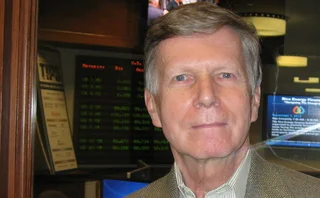FCStone to post bad debt provision
In a conference call on 4 November 2008, Pete Anderson, president and chief executive officer of FCStone, said the company was taking appropriate actions in response to the issue. However, further losses have not yet been ruled out by the company.
It may be possible for the firm to recover some of the loss from the introducing broker under a sharing agreement, but it could not provide details on the amount and timing of recovery.
The company has added to its internal credit risk management staff, in response to the issue, and has undertaken a complete review of its clearing customers’ accounts. It has also employed an external consultant to review risk procedures, processes and systems within the firm.
FCStone has no other accounts with a similar level of exposure or risk to the energy trading account, according to Anderson. He added: “We dropped the ball with this account but the rest of the book of our business is sound and adequately margined.”
FCStone is due to announce its fiscal year end and fourth quarter 2008 results on Thursday 13 November 2008.
More on Risk management
LNG trading strategies set to change amid major market shifts
The global LNG market is on the brink of significant changes set to alter trading dynamics and market behaviour, say analysts
Why commodity finance is ripe for stablecoin
Digital currency brings cost efficiencies to financing, but its real benefit to commodity firms lies in making huge pools of new capital available, write Jean-Marc Bonnefous and Ronan Julien
US shutdown leaves commodity traders without key data
Commodity traders are ‘flying blind’ without Commitment of Traders reports
Energy Risk at 30: Learning from the past
Energy Risk looks back at the seminal events and developments that have shaped today’s energy markets
Past disasters can prove the value of energy risk management
Analysing failures and losses at energy firms can underscore the value of consistent, high-quality risk management
How quants shaped the modern energy markets
The business models of today’s utility firms are built on quantitative analysis, but the introduction of these techniques in the 1990s was far from smooth
Interview: Vince Kaminski
Market veteran Vince Kaminski discusses the biggest risks to energy firms today and whether risk teams can ever prove their value
Mounting risk prompts refocus on integrated energy risk management
Energy firms are facing heightened risk due to shifting geopolitics, climate change and the energy transition. As market, credit and enterprise risks ramp up, the need for improved integrated risk management is growing, say risk managers







